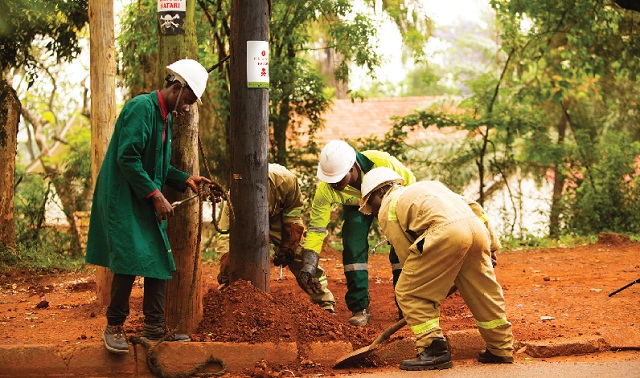Umeme says ity has invested in replacing rotten wooden electricity poles with concrete ones, starting with those in marshes in the East and North East. Paul Jagenda, 27, a software developer, prefers Working from Home (WFH) to operating in office.
While huddling in the workplace comes with croissants on the house, the small talk can be distracting.
Although WHF leads to upticks in his electricity bill, it is a trade-off for the stress that comes with being stuck in backed up traffic to and from office.
The disincentive for WFH is Jagenda’s lack of a generator yet outages interrupt supply to his digs in Najjera, Kampala. On days when he will not tolerate even the shortest outage, he heads to office because there is a generator.
Jagenda will in the not-so-distant future be able to work remotely – whenever he desires – without worrying about electricity. Strides are being made towards improving the reliability of supply, with the Electricity Regulatory Authority setting tougher targets for the distribution utilities.
ERA reasons that blackouts drive electricity consumers to resort to alternative energy sources yet at the time, the Country is focusing on increasing power consumption in order to acquire the revenue required to operate the Industry.
It adds that with uninterrupted supply of clean energy, consumers like Jagenda could use even more power, thus increase their productivity.
Speaking on 10th March in Kampala during the launch of Umeme’s online connections application portal, Selestino Babungi, the Umeme’s managing director, touched on the subject.
He said the company appreciates the importance of uninterrupted supply and is addressing its customers concerns.
“That is why we are doing a lot of zoning, automation and strategically positioning staff to be more responsible to our customers,” Babungi said.
To improve reliability, the company has over the years been replacing rotten wooden electricity poles with concrete ones, starting with those in marshes in the East and North East.In Gayaza, Wakiso District and Kawempe in Kampala, Umeme has invested $346, 349 to reduce the frequency and duration of blackouts in the two suburbs.The money went to buying thicker cables to reduce the percentage of energy lost as heat. The cash also covered switching devices.According to ERA’s director corporate and consumer affairs John Julius Wandera, reliability is currently the biggest challenge in the electricity sub-sector.The carrot-and-stick approach rewards the utility through extra points for scoring above the reliability target and penalises it if it falls below it.
